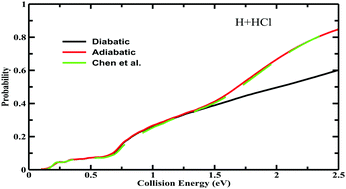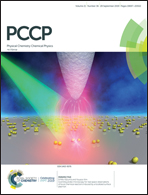Two-state diabatic potential energy surfaces of ClH2 based on nonadiabatic couplings with neural networks
Abstract
A general neural network (NN)-fitting procedure based on nonadiabatic couplings is proposed to generate coupled two-state diabatic potential energy surfaces (PESs) with conical intersections. The elements of the diabatic potential energy matrix (DPEM) can be obtained directly from a combination of the NN outputs in principle. Instead, to achieve higher accuracy, the adiabatic-to-diabatic transformation (ADT) angle (mixing angle) for each geometry is first solved from the NN outputs, followed by individual NN fittings of the three terms of the DPEM, which are calculated from the ab initio adiabatic energies and solved mixing angles. The procedure is applied to construct a new set of two-state diabatic potential energy surfaces of ClH2. The ab initio data including adiabatic energies and derivative couplings are well reproduced. Furthermore, the current diabatization procedure can describe well the vicinity of conical intersections in high potential energy regions, which are located in the T-shaped (C2v) structure of Cl–H2. The diabatic quantum dynamical results on diabatic PESs show large differences as compared with the adiabatic results in high collision energy regions, suggesting the significance of nonadiabatic processes in conical intersection regions at high energies.



 Please wait while we load your content...
Please wait while we load your content...